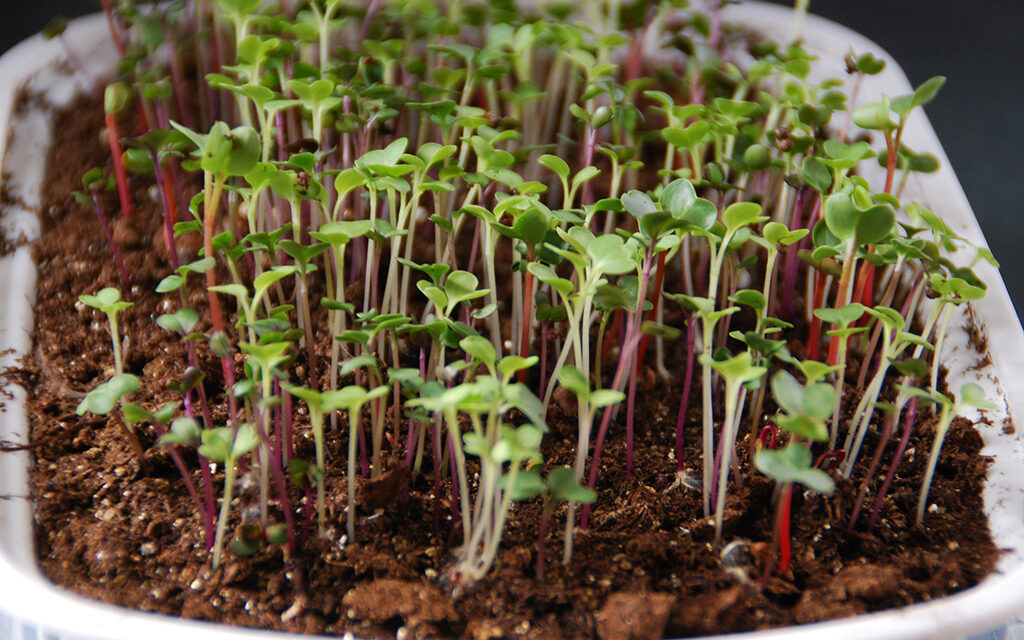by Melinda Myers
The New Year is filled with resolutions that usually involve dieting and exercise. Gardening is a great way to help accomplish those two resolutions, while also improving your mood, reducing blood pressure, managing anger, maintaining flexibility, and more.
Start the new year with a plan to incorporate healthy vegetables into your containers, gardens, and meals. Growing vegetables encourages you to eat more fresh produce and maximizes the benefits. You’ll be able to harvest the vegetables at their peak of ripeness for the best flavor and maximum nutritional value. Plus, you control what, if any, chemicals are used in your gardens and containers.
Involve family and friends during the planning process and continue supporting each other in this healthful endeavor throughout the year. Research has found that making gardening a more social experience can intensify the physical and mental health benefits. Even sharing your surplus produce with others can reap greater health benefits.
Begin by growing a few microgreens this winter. These fast-growing nutritious greens are easy to grow and do not require much space or special equipment. Just repurpose some fast-food containers, fill them with a seed starting mix or quality potting mix, and plant the microgreen seeds. Many garden centers, catalogs, and organic food coops sell microgreen seeds and sprouting seeds.
Grow a few pots of herbs in a sunny window or under artificial lights. Herbs are a healthy way to add flavor to winter meals. Start them with seeds or purchase transplants to shorten the time to harvest.
Plant these in a container with drainage holes filled with a quality potting mix. Follow the directions on the seed packet or plant tag for planting and care information. Once they are at least four to six inches tall, you can begin harvesting. Just make sure there will be enough leaves left on the plant to support new growth.
Look for new ways to prepare and incorporate vegetables into your diet. You’ll find lots of recipes online and in cookbooks available from your library.
Start a list of vegetables you want to include and those that are suitable to grow in your location. Your state’s extension service has information on what vegetables will thrive in your area and tips on when and how to plant and care for them.
Take stock of your current seed inventory. Make a list of any seeds and transplants you’ll need to buy to boost the nutrition of your garden harvest. Greens like spinach, collards, Swiss chard and kale, carrots, beets, broccoli, Brussels sprouts, and red cabbage are among the most nutritionally dense vegetables.
Consider growing those plants that are most productive and cost-effective for the available space. Look for vegetables like tomatoes and sweet peppers that produce an abundance of fruit from just one plant. Adjust your harvest techniques to keep plants like broccoli and greens producing beyond the first harvest.
Once your list matches your gardening space, it is time to draw up a garden plan. If you are new to gardening, consider starting small and expanding over time. You will need sufficient time for planting and throughout the growing and harvest season to maintain, harvest, and utilize all the vegetables you grow.
Starting your nutritional gardening practices inside this winter will help generate momentum and keep you focused on your nutrition goals throughout the growing season.
Melinda Myers has written more than 20 gardening books, including the recently released Midwest Gardener’s Handbook, 2nd Edition and Small Space Gardening. She hosts The Great Courses “How to Grow Anything” instant video and DVD series and the nationally syndicated Melinda’s Garden Moment radio program. Myers is a columnist and contributing editor for Birds & Blooms magazine. Myers’ website is www.MelindaMyers.com.




